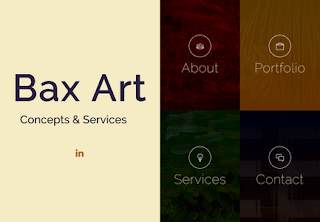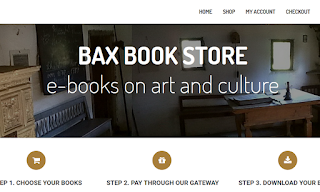You may not have noticed, because not everyone speaks and reads Swedish, but beware: soon you may never be able to see Hilma af Klint's work in public again, as recently reported by Dagens Nyheter. According to the foundation that manages the work, you can only gain access if you are demonstrably Christian (so not Muslim or Hindu, imagine), 'strive for spiritual knowledge' or 'support Hilma af Klint's mission'. The foundation determines whether you are 'suitable'. That sounds quite sectarian.
What was Hilma's mission actually? At the end of her life, Hilma was offered the opportunity to have the work preserved in one of the most important Swedish cloisters (Christian, that is), but she refused. Hilma fiercely defended the work as being inspired by Theosophy and later Anthroposophy. Now, if there is one movement that opposed the dominance of Christianity and simultaneously is religiously inclusive by definition, it is Theosophy! The artistic work itself consists of an amalgam of religious, spiritual and pagan elements from all world religions and all times. Part of the world-wide success of the work lies in its appeal to present religious inclusivity.Nevertheless, the chairman of the foundation, family member Erik af Klint, says that he strictly adheres to the statutes of the Foundation. According to him, the work is not art, it is a message from the spiritual world, whispered in Hilma's ear by her ‘master’ (a Theosophical concept, by the way). The work is therefore no longer lent to exhibitions because ‘if religion comes into a museum, it is dead’. That is a strange concept, because much art is related to religion, in one way or another. It is also not true that the exhibitions are halted, because the foundation's website shows 6 exhibitions this year. The barrage of popular merchandise, including the auction of 193 NFTs of the work in 2023, seems to be a blatant violation of the statutes as well. The desire to sell some of the foundation's work to maintain the collection even so.
In order to finally put a stop to this vulgar commercialism, Erik has now, after a few previous failed attempts at lower authorities, filed a lawsuit with the Stockholm Court of Justice. Either he gets out, or all other board members get out. Preferably the latter, of course.Now Erik runs into a problem here. Several even. And he is not the only one. By statute, the board of the foundation must consist of a majority of Anthroposophists (why, that is another matter altogether). And these Anthroposophists, affiliated with the Anthroposophical Society in Järna and the Ax:son Johnson Foundation that sponsored many of the activities around Hilma, are now the victims of an actual smear campaign, threats, extortion and intrusions into buildings. People have even had to hire personal security detail. It is almost criminal. Hilma's 'master' certainly would not have whispered that into her ears.
The chance that Erik will win the lawsuit seems small to me. A foundation has a democratic structure, not an authoritarian one according to the rules of the nobility to which Erik belongs. But apart from this administrative hassle, the current squabble does not touch on the core of a decades-long issue.
The foundation, established in 1972 on the statutes mentioned, is itself the cause of the mercantilism surrounding the work. In 1986, Hilma was presented with great fanfare in the exhibition The Spiritual in Art as the artistic discovery of the century. The foundation has therefore presented the work as art. The exhibition in the Guggenheim Museum in New York (2019) sealed Hilma's entry into the pantheon of artistic pioneers. The merchandise, generated by the foundation itself, was and still is in great demand.
But – and this is the core question – is the work really by Hilma? Over many years, I, as an art historian with a considerable international track record on thorough research, have been hammering away at the essential problems surrounding this glorification of Hilma and ‘her’ work. My first blog dates from 2013. I have written several books and scholarly essays: one on Hilma's first exhibition in 1913, an iconographical analysis of the first painting of The Ten Greatest, and on the myth of the early relationship between Hilma and Rudolf Steiner. All these publications raise the fundamental issue of attribution of works to Hilma and false interpretations of iconographical elements in the works.In modern terms: the myth of Hilma af Klint is the result of a decades-long disinformation campaign by the foundation, which not only produced exhibitions but also research and publications – and said merchandise – that were not allowed to deviate from that myth. As a private foundation you have the right to determine your own course, but as soon as you explicitly strive to enter the public domain with its own set of rules, there are responsibilities involved. One of them is open discourse.
To this day, it has not been established, on the basis of hard facts and according to the most elementary and common art historical research methods, which work was actually made by Hilma herself. Hilma was a member of De Fem, a collective of creative women. Among them, not in the least, Anna Cassel, Hilma’s lifelong friend, artistic partner and private sponsor. When will it be, finally, time for this elementary research to take place? The work of every artist, especially one of international stature, is and should be scrutinized through the same art historical magnifying glass. Authentication makes or breaks a work and a reputation. That also applies in this case.
Does Erik af Klint secretly want to prevent this research by closing the collection and classifying the work as sectarian? Research costs a lot of money, there is a reputation at stake, and prestige, and wealth. Or the loss of it. The consequence of this research could be that (part of) the work is not by Hilma at all – which I expect. You see the value plummet before your eyes. Selling work as ‘a Hilma’ can result in fraudulent conduct. That is a criminal offence and an mortal sin in the art world. Removing the work from the exhibition circuit does not solve all those problems. The current call for the Swedish State to become the guarantor of the work is just as tricky when its authenticity has not been established. Another consequence is that the foundation unlawfully prevents access to work by other artists from the group, which forms part of the current, not even fully inventoried collection. That could lead to a new round of legal proceedings.
The Hilma af Klint Foundation has a very, very big problem. As Ollie Hardy repeatedly exclaimed to Stan Laurel, "Well, here's another nice mess you've gotten me into."

























